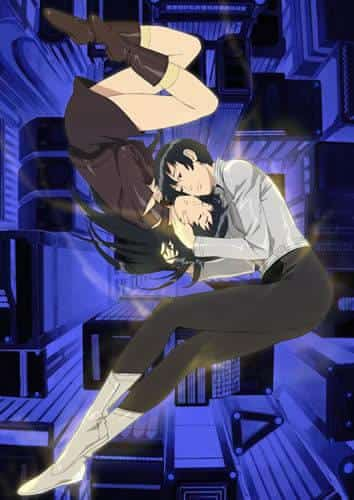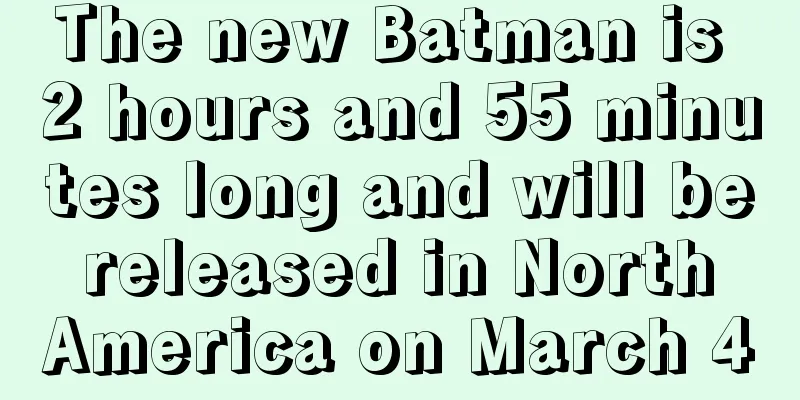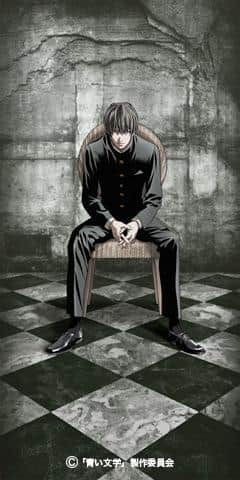"Ore wa Chokaku" review: Unique characters and fascinating storytelling

"I am a Right Angle" - A story of youth and bushido in the Edo period■Overview of the work"Ore wa Chokaku" is a TV anime series based on the manga of the same name by Koyama Yu, which aired a total of 36 episodes from January 5th to October 12th, 1991. It was broadcast on Fuji TV in a 30-minute slot every Saturday from 18:30 to 19:00. The series is set in the late Edo period and follows the story of a boy named Chokaku, born into a strict samurai family, who enrolls in a prestigious school and grows up alongside the various people he meets there. ■ StoryIt's the end of the Edo period. Chokaku is a boy born into a strict, though not wealthy, samurai family. He hates anything crooked and is adamant about his adherence to bushido. Chokaku ends up entering a prestigious school with a long history. However, it was an unprecedented event for a samurai's son, who was not particularly famous, to enter a school of learning where the sons of distinguished families gathered. Chokaku enters the school with great ambition, but the school, which was founded to promote both the arts and sciences and to be an example for people, has now become a tool for success. However, coming into contact with Chokaku's personality, which always maintains a resolute attitude towards anyone, little by little it brings about changes in the hearts of the students and the school. ■Explanation"Ore wa Chokaku" is an animated work based on the manga of the same name by Yu Koyama. This work, which was made into an anime 15 years after the end of its serialization, is characterized by its passionate depiction of Chokaku, who sticks to his own will and faces any opponent or difficulty head-on, no matter how strong, in a feudal era. The anime adaptation has faithfully retained the essence of the original work while adding new appeal through visual expression. ■Cast・Chokkaku/Chinatsu Sakamoto・Father/Takeshi Aono・Mother/Kumiko Takizawa・Terumasa/Mayumi Tanaka・Jun/Ai Orikasa・Hosokari/Kenichi Ogata・Go/Takehito Koyasu・Tsukigata/Kazunari Futamata・Ayano/Ikue Otani・Nikopin/Rika Matsumoto・Castle lord/Toru Ohira・Hojo/Ichiro Nagai・Narrator/Tomoaki Nishimura ■ Main staff・Planning: Kazuo Shimamura (Yomiuri Advertising Agency) ■ Main Characters・Right-angled stone wall ■Subtitle・Episode 1: Naoki Ishigaki has arrived!? ■ Appeal and evaluation of the work"I Am Chokaku" is set against the historical backdrop of the late Edo period and depicts the growth, friendship, and samurai spirit of a boy named Chokaku. Chokaku's character is appealing because, while he has a strong sense of justice and will, he also grows through deep interactions with the people around him. Furthermore, the story of how Chokaku overcomes the various difficulties he faces through his interactions with unique characters such as Terumasa, Jun, and Ayano is sure to inspire and encourage viewers. The anime adaptation has faithfully retained the essence of the original work while adding new appeal through visual expression. In particular, the depiction of Chokkaku's special move, the Chokkaku Slash, can be enjoyed visually with the dynamic expression that is unique to anime. In addition, the character designs and background art also faithfully reproduce the atmosphere of the Edo period, and the visual beauty is also one of the charms of the work. In terms of music, the soundtrack by Yusuke Homma and the theme songs by Busy Four Special add to the worldview of the work. The opening theme "Gakumon no Suzume" and the ending theme "Hikiri ni Nare Ni Irarenai" have lyrics and melodies that symbolize Chokaku's youth and growth, and will resonate with viewers. ■ Recommendation points"Ore wa Chokaku" is an anime that can be recommended to a wide range of generations as a work that depicts youth, friendship, and the samurai spirit. It is especially recommended for the following viewers:
This work will surely give courage and inspiration to viewers through the growth of a boy named Naokaku. Furthermore, viewers will be drawn into the world of the work through the visual expression that faithfully recreates the atmosphere of the Edo period and the interactions with the unique characters. Please watch "I Am Naokaku" and enjoy the story of Naokaku's youth and growth. |
<<: The appeal and evaluation of Dragon Quest Season 2: Exploring the depths of a new adventure
>>: The Appeal and Evaluation of the Naughty Twins: The Story of Claire Academy
Recommend
Blend S: A unique part-time cafe experience and the appeal of its characters
Blend S - A cafe filled with laughter and healing...
Hypnosis Mic -Division Rap Battle- Rhyme Anima Season 2: Its Appeal and Evaluation
Hypnosis Mic -Division Rap Battle- Rhyme Anima + ...
Michael B. Jordan: The sequel to "The Cold Blooded Titan" may pay tribute to the "Rainbow Six" game
The military-themed movie "Inception" s...
Impressions and reviews of "BanG Dream! Film Live 2nd Stage": A thorough explanation of the appeal and evolution of the live show
Bang Dream! FILM LIVE 2nd Stage - Detailed review...
The most expensive American TV series in history, "The Lord of the Rings", is scheduled to be broadcast on September 2, 2022
The Lord of the Rings, which many fans have been ...
The heroine of the movie "Snow White" criticized the original animation and wanted to delete the prince's scenes
Recently, Rachel Zegler, the lead actress of the ...
LOL animated series "League of Legends: Two Cities War" released a new trailer
Recently, LOL’s first animated series "Leagu...
"Crayon Shin-chan" new animated film is released, Yamada Takayuki makes a surprise guest appearance as a voice actor
The latest work in the series, the new "Cray...
Transformers launches new teen comic featuring the worst robot ever
"Transformers", which was born in 1984,...
The appeal and reviews of "The Town Where You Live": A thorough explanation of the moving story and the depth of the characters
The appeal and evaluation of "The Town Where...
PSYCHO-PASS Psycho-Pass New Edition: Reevaluation and the Appeal of the Deeper Side
PSYCHO-PASS Psycho-Pass New Edition: Exploring th...
"BLASSREITER" Review: A dark motorcycle action anime depicting the conflict between biotechnology and humanity
Blassreiter - A dark fantasy set in near-future G...
FNS Earth Special Investigation Team Dive Buster: The appeal and evaluation of the series
FNS Earth Special Investigation Team Diebuster [S...
"Nezha: The Devil Child Comes into the World" box office exceeded 3.7 billion and ranked fourth in Chinese film history
The domestic animated film "Nezha: The Devil...
"The moment the smile returns to the wind": Reevaluating the moving voice of Minna no Uta
"The Moment the Smile Returns to the Wind&qu...









